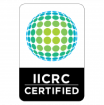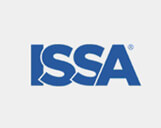Hurricanes, floods, and snow all put your property at risk for water damage. And, while some things can be prevented, none of us controls the weather. You can’t always predict a flash flood or when a hurricane will hit, but there are steps you can take to prevent, reduce, or minimize water damage caused by storms, blizzards, and rainfall. By having a steady maintenance routine and following these simple steps, you can ensure water damage is no match for your facility or commercial property.
- Inspect your property for water damage.
Inspect your property for areas where you might already have flooding or where flooding could present a problem and make any necessary repairs as needed. Don’t wait until disaster strikes. By that time, it might already be too late. Be proactive and take action before you’re in too deep.
- Leave it to the professionals
Consider hiring a professional to conduct a thorough water damage inspection of your property. An experienced professional will know what signs to look for. A professional inspector is trained to spot potential vulnerabilities so that you can fix the damage before you’re in over your head.
- Cover all your bases.
Cover your bases by carefully checking the following places for flooding, drainage issues, and signs of water damage.
Floor
Look for signs of water damage in your flooring. The signs to look for will vary by floor type. For tile and wood, look for cracked, buckling or warped flooring. On carpet, check for damp spots, unevenness, soft spots, and the smell of mold or dampness.
Exterior
Observe the exterior of your facility. Look for pools of standing water, which indicate poor drainage, gutter spouts that aren’t transporting water far enough away from the building, or leaky gutters.
Check for Stains, Rust, and Mold
Some common signs of water damage to your property include water stains on the floor around the toilets or sinks, as well as stains on ceilings and walls. Less common things to look for include cracks in the drywall or areas that appear swollen and are soft to the touch. If you see paint peeling off the walls, that might mean there is loose water within your wall spaces. Check your water heater for rust on the tank or damp spots on the floor. A rusted tank could mean there is a slow leak. Corrosion around pipe connections could be caused by water seepage. Also, look for signs of mold on the walls. Aside from the visible signs, mold tends to produce a musty smell.
4. Take snow seriously.
Remove large accumulations of snow from any areas where it could melt and possibly enter your facility. Shovel snow away from the perimeter and clear all walkways. Make sure your gutters are clean and clear. Ice and compacted snow can cause an ice dam, which will clog your gutters and prevent water from draining properly. If ice is melting and dropping off the edge of your roof, that’s a good thing as it indicates that you probably don’t have an ice dam. Additionally, when shoveling snow, think about which direction it will drain when it melts. Consider digging channels to divert water to the nearest drain.
5. Clean your roof and gutters.
Clean your roof and gutters regularly, especially before the winter season. An accumulation of water on the roof can start to leak through the ceiling. Common signs of water damage on the roof include pools of water, cracked, curled or missing shingles, and broken flashing. Rain trapped in your gutters might eventually back up into your building. Make sure to clean your gutters thoroughly of all dirt and debris to prevent clogs.
6. Make sure your foundation is solid and well-protected.
Consider making repairs to your foundation and basement. Fill cracks with caulk, patch foundation walls, and install a sump pump to keep your building safe and dry.
7. Landscape to prevent flooding.
Use the proper landscaping techniques that will flood-proof your property. For example, make sure the ground is level or sloping away from your building so the rain will drain away from it. Your landscaping should allow water to run downhill and away from your facility’s foundation as much as possible. Have plenty of drains installed around the property to prevent water from seeping into your building.
Inspecting, cleaning, and making the right adjustments might sound like a lot of work, but if you do it before a storm hits, you can save a great deal of money that would otherwise have been spent on future damage repairs.
EMERGENCY / RESTORATION
When the unexpected happens, QFS Restoration is there
Inquire about our 24-hour Emergency Restoration Service here:










